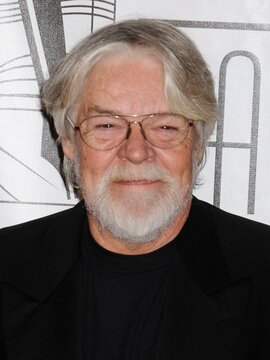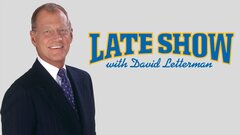Bob Seger

Singer • Musician • Songwriter
Birth Date: May 6, 1945
Age: 79 years old
Birth Place: Detroit, Michigan
Hailing from the rough-and-tumble Michigan rock scene, which spawned the likes of Mitch Ryder, Ted Nugent, Alice Cooper and the Stooges, Bob Seger was a gutsy, blue-collar singer-songwriter whose blend of classic rock and R&B, as heard in radio staples like "Rock and Roll Never Forgets," "Old Time Rock and Roll" and countless others, found exceptional favor with audiences from the late 1960s into the 21st century. He began playing in garage bands while still in high school, and his gritty vocals, heavily influenced by both John Fogerty and James Brown, soon made him a leading figure on the city's music scene during the late 1960s. It would be almost a decade later, however, before Seger broke into the national market through rootsy, soulful numbers like "Katmandu" and "Still the Same," as well as ballads like "We've Got Tonight," all of which would become fixtures on FM radio for the next four decades. Seger's popularity peaked in the early 1980s with "Against the Wind," among others, before a long, fallow period in the 1990s. However, as one of his most popular songs dictated, rock-n-roll never forgets, and Seger rebounded in the 21st century with the well-received Face the Promise (2006). A definitive artist of 1970s and 1980s rock, Bob Seger remained one of the genre's hardest working and most successful players for over a half-century.
Born Robert Clark Seger in Dearborn, MI on May 6, 1945, he was the son of medical technician Stewart Seger and his wife, Charlotte, who moved Seger and his brother, George, to Ann Arbor in 1951. Seger discovered rock-n-roll through his father, who played several instruments, and through the radio, where he first heard Elvis Presley and Little Richard, artists who would have a profound influence on his own music career. The middle-class comfort of Seger's home life came to an end in 1956 when his father abandoned the family over conflicts with his mother and moved to California. His high school years were marked by struggles to keep the family financially solvent, and Seger found solace in playing rock-n-roll. He formed his first band, a three-piece called the Decibels, in 1961. They recorded a demo of the Seger composition "The Lonely One," which became his first song to receive airplay on the radio.
When the Decibels disbanded, Seger joined the Town Criers, with whom he exercised his growing love for the R&B music of James Brown and the pop precision of the Beatles. Though the Town Criers found regular work on the club circuit, he left the group to join Doug Brown and the Omens, which featured more R&B material in their set list. In 1965, the group, hiding behind the moniker of "The Beach Bums," released "The Ballad of the Yellow Beret," a single that parodied Sgt. Barry Sadler's "The Ballad of the Green Beret" while taking potshots at draft dodgers. The song was quickly withdrawn from the market after Sadler's label threatened a lawsuit. In 1966, Seger penned the gritty, soulful rocker "East Side Story" for the Underdogs, a local group with whom he shared a manager, Edward "Punch" Andrews. Though they failed to find an audience with the song, Seger recorded a version with several members of the Omens and his previous group, the Town Criers. When his "East Side Story" became a hit in the Detroit area, he quickly assembled another group to record four singles for the Cameo-Parkway label. The most successful of these was 1967's "Heavy Music," which rose to the top of the Detroit radio charts before hit No. 103 on the Billboard singles chart. The song appeared to be Seger's ticket to a national audience, but Cameo-Parkway folded shortly after releasing the song.
The following year, Seger parlayed the success of "Heavy Music" into a contract with Capitol Records. After relabeling his band as the Bob Seger System, he released "2 + 2 =?," an anti-war protest song that stood in stark contrast to the conservative viewpoint expressed in "The Ballad of the Yellow Beret." A hit in several major markets, the song failed to land on the Billboard charts, but the title track from their 1969 debut album, Ramblin' Gamblin' Man, shot to No. 17. However, the group was unable to repeat its success with their second album, 1969's Noah, which was the end result of an attempt by the label to make singer-songwriter Tom Neme the band's new leader. Disgusted by the machinations and the failure of the album, Seger quit the group and attended college.
His tenure in academia was short-lived. By 1970, he was experimenting with a solo act, which generated an all-acoustic album, Brand New Morning (1971). It too failed, and ended Seger's relationship with Capitol Records. He began performing with the duo Teegarden & Van Winkle, which resulted in the 1972 album Smokin' O.P.
s, a collection of covers that included a new take on "Heavy Music." He then formed a new backing band, alternately called My Band or the Borneo Band, comprised of top-notch session players like drummer Jamie Oldaker and keyboardist Dick Sims. The group recorded Back in '72 for Seger and Andrews' own label, Palladium Records. Though it featured an early version of "Turn the Page," a staple of Seger's later live sets, and the single "Rosalie," which became a hit for Thin Lizzy, the album did not improve the singer's fortunes.
He disbanded My Band in 1973 and formed the Silver Bullet Band, which backed him on his next album, Seven (1974). Though it generated only a minor hit with "Get Out of Denver," the group caught the attention of KISS, which invited them to open for their upcoming tour. The exposure boosted Seger's profile, as did "Katmandu," the lead single from the Silver Bullet Band's 1975 album, Beautiful Loser. It landed just shy of the Top 40 on the Billboard singles chart, but its popularity set the stage for Seger's breakthrough album, Live Bullet(1976). A double album recorded during the band's performance at Detroit's Cobo Hall in September 1975, it generated a massive radio hit with an epic take on "Turn the Page," a world-weary rumination on the life of a touring musician. The album rose to No. 34 on the Billboard album chart and established the Silver Bullet Band as a formidable presence on the rock circuit.
For the next decade, Seger would maintain his grip on the charts through a string of mainstream tunes that recast his image as a heartland rocker on par with the likes of Bruce Springsteen, Tom Petty, and John Mellencamp. In 1976, Night Moves, Seger's first Top 10 album, scored with the nostalgic title track and "Mainstreet," as well as the Detroit funk of "Rock and Roll Never Forgets." Stranger in Town (1979) repeated the success with "Still the Same" and the Top 20 ballad "We've Got Tonight," though its best-known song, "Old Time Rock and Roll," would not peak until its memorable use in the 1983 film "Risky Business." It would go on to become the second most-played jukebox single in history.
After co-writing "Heartache Tonight" for the Eagles' Long Run album, the group returned the favor for the single "Fire Lake," a Top 10 song from Seger's 1980 album Against the Wind, which became his first No. 1 album, as well as his first Grammy-winning release. Its follow-up, the live album Nine Tonight (1981), broke the Top 5 with its single, "Trying to Live Life Without You" reaching No. 2 on the Mainstream Rock chart. His next studio album, The Distance (1982), was released on the heels of a shake-up within the Silver Bullet Band. Several members, including one of its key players, guitarist Drew Abbott, left the group over Seger's use of session musicians in the studio instead of his band. Listener response to the album was decidedly less enthusiastic than for previous releases; though it featured a No. 2 hit with the Rodney Crowell-penned "Shame on the Moon," The Distance sold just 1.9 million copies, which suggested that Seger's popularity had begun to wane.
Seger waited an uncharacteristic four years to release his next album, 1986's Like a Rock. The title track, which later became the focal point of a long-running Chevrolet TV ad series, helped to boost sales to 3 million, and Seger launched his last major tour behind the album. The success of the live dates was followed by "Shakedown," a 1987 track for the Beverly Hills Cop II (1986) soundtrack that was originally slated as a Glenn Frey project. The former Eagle lost his voice prior to recording, and asked Seger, whom he had known since the late '60s when both were staples of the Detroit club scene, to take his place. An uncharacteristically "modern" song, with heavy synthesizers and flashy guitar work, "Shakedown" surprised many by reaching No. 1 on the pop charts. It also earned Oscar and Golden Globe nominations for Best Original Song, but lost both to "(I've Had) The Time of My Life" from "Dirty Dancing" (1987).
Seger would remain absent from the music business for the remainder of the 1980s, and when he resurfaced in 1991 with The Fire Inside, he found that the landscape had changed dramatically since his last record. Though the record reached No. 7 on the albums chart, it generated no hit songs, and its follow-up, 1995's It's a Mystery, was his lowest-selling record since 1976. The next 10 years would be spent largely with his family, though his exceptional career was feted on several occasions. In 2001, a collective that included the Recording Industry Association of America, the National Endowment for the Arts, and Scholastic, Inc. named his song "Old Time Rock and Roll" as one of the Songs of the Century. Three years later, he was inducted into the Rock and Roll Hall of Fame by fellow roots rocker and Detroit native Kid Rock; the following year, he and the Silver Bullet Band became part of the Michigan Rock and Roll Legends Hall of Fame.
In 2006, he released Face the Promise, his first album of new material in over a decade. A surprise hit, it rose to No. 4 on the Billboard albums chart and achieved platinum status in sales, despite no significant singles. A successful tour soon followed, and Seger closed out the first decade of the 21st century by digging into his archives for Early Seger Vol. 1 (2009), a collection of early or unreleased material from the 1970s. In 2011, Seger returned to arenas for a well-received tour, while his hometown proclaimed March 28 of that year Bob Seger Day in homage to his half-century of music.
By Paul Gaita
Credits

The 39th Annual Kennedy Center Honors

CBS This Morning

Bob Seger: Wait for Me

3 Doors Down & Bob Seger: Landing in London

The Ellen DeGeneres Show

Jimmy Kimmel Live!Stream

Mumford

Late Show With David Letterman

Bob Seger Feat. the Silver Bullet Band: The Fire Inside

Bob Seger Feat. the Silver Bullet Band: Old Time Rock & Roll

Bob Seger Feat. The Silver Bullet Band: Hollywood Nights


















